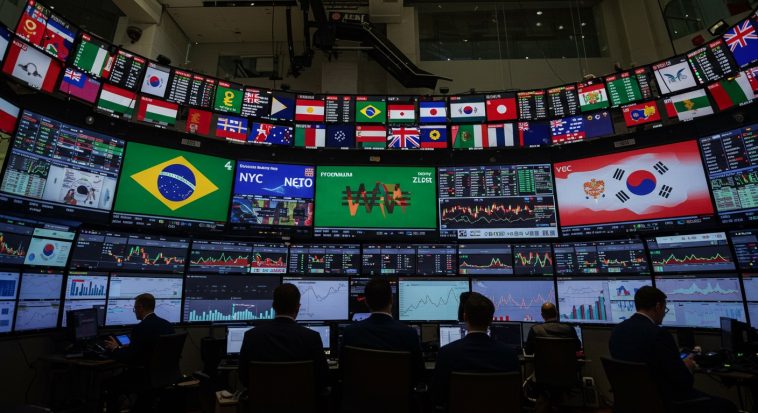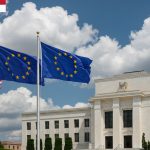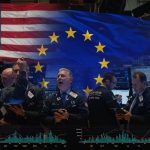A surprise move from Washington sent ripples through the global currency markets on Monday, giving emerging market currencies a much-needed lift as risk appetite returned.
In a holiday-thinned trading session, President Donald Trump’s decision to delay the imposition of steep tariffs on the European Union gave global investors room to breathe — and they took full advantage. The U.S. dollar, already under pressure, dipped further, and emerging market (EM) currencies responded with strength.
Dollar Dips, EM Gains
The MSCI Emerging Markets Currency Index rose as much as 0.4%, reaching a record high. The move reflects growing investor appetite for riskier assets, particularly in developing economies, as the greenback flounders near its lowest level in nearly two years.
“We’re starting to really see the stars align now,” said Amy Oldenburg, head of emerging market equity at Morgan Stanley Investment Management. “With the dollar weakening, capital is flowing into markets that had been on the defensive for some time. It’s a welcome tailwind.”
Risk-on sentiment — a term traders use to describe periods when investors seek out higher-yielding, riskier investments — was visible across several markets. South Korea’s benchmark stock index surged by 2%, while India’s Nifty 50 added 0.6%. Although MSCI’s broader gauge of emerging-market stocks fell slightly, the general trend reflected growing optimism.
Tariff Delay Buoys Global Sentiment
Trump’s announcement to push back the tariff deadline on EU imports until July followed a phone call with European Commission President Ursula von der Leyen. The EU agreed to fast-track trade talks in hopes of avoiding a potentially damaging transatlantic trade war.
The reprieve from new tariffs gave emerging markets a boost, especially since many of these economies are deeply linked to global trade flows.
“The temporary truce is buying some time for risk markets to rally,” noted Henrik Gullberg, a macro strategist at Coex Partners Ltd. “But it also reminds investors how vulnerable global markets are to U.S. policy whims.”
Emerging Market Winners and Laggards
The Polish zloty led the day’s emerging market currency gains, reflecting investor confidence in Central Europe’s relative stability. On the flip side, Brazil’s real lagged behind, weighed down by concerns over fiscal uncertainty and contentious new tax measures.
“Brazil’s underperformance isn’t surprising,” said Piotr Matys, senior analyst at inTouch Capital Markets. “While the broader EM story looks promising, country-specific risks remain very real.”
Stagflation Worries in the Background
Despite the tariff extension, some analysts caution that the underlying risks haven’t gone away. Trump’s trade policies, combined with a growing U.S. fiscal deficit, are prompting investors to reassess their exposure to American assets.
“There’s an increasing concern that tariffs could have stagflationary effects — slower growth combined with rising prices — which would hurt not just the U.S. but also its key trading partners in the emerging world,” Matys added.
Although U.S. inflation remains tame for now, economists expect rising import costs could show up in official data later this year. That could put further pressure on consumer spending and business investment, weighing on growth.
Geopolitical Tensions Resurface
Adding to the mix, Trump said on Sunday that he is “absolutely” considering new sanctions against Russia following an uptick in violence in Ukraine. The remarks signal a possible hardening stance against Moscow and come at a sensitive time for emerging market investors.
Ukraine’s dollar-denominated bonds — once a favorite among EM investors — have taken a hit recently. This year, they’ve been the worst performers among all emerging and frontier market sovereign debt, reflecting a cooling of investor optimism about a peace deal with Russia.
Looking Ahead: Fragile Optimism
While emerging market currencies are enjoying a rare moment of strength, analysts warn the landscape remains volatile.
“Investors are walking a tightrope,” said Oldenburg. “There’s optimism, yes — but it’s cautious optimism. One tweet can still change everything.”
With the U.S. dollar on the defensive and geopolitical tensions simmering, emerging markets may continue to see inflows. But the gains will likely depend on how long the calm in trade relations holds — and whether Washington’s next move supports or spooks global markets.



